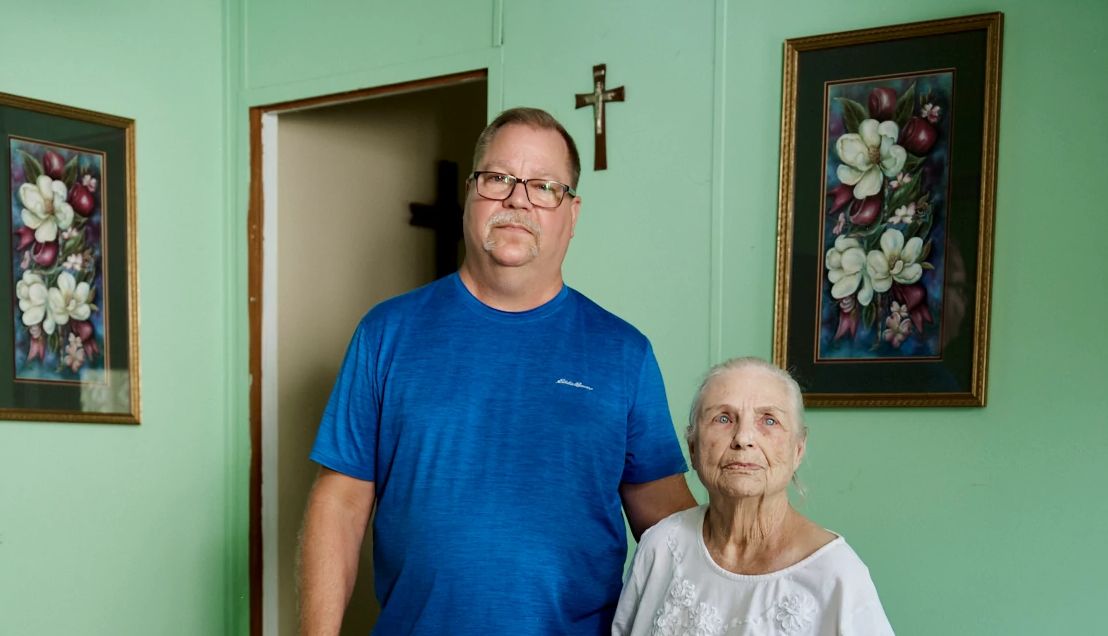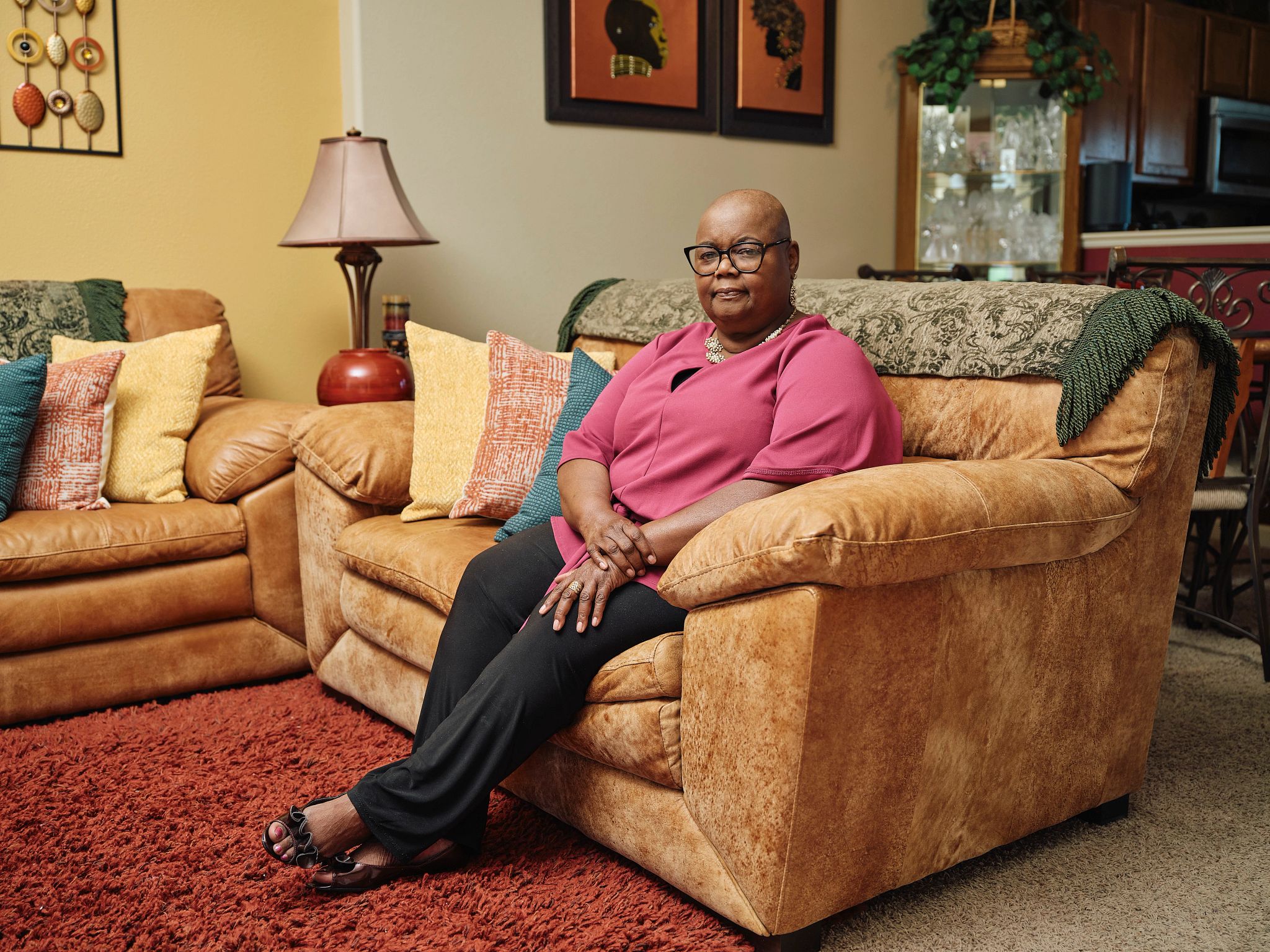AARP Hearing Center


Off a bumpy gravel road that runs through the rolling hills of northwestern Louisiana, Chris Fertitta, 59, dedicates his days and nights to caring for his 85-year-old mother, Emily. Fertitta cooks, cleans, pays bills and manages medications as his mother’s full-time, unpaid caregiver. On good days, the duo sings Johnny Nash songs together and watches for blue jays from their front porch. On hard days, they try to navigate getting a wheelchair-bound Emily from the toilet to the shower safely.
“There are pros and cons, like everything in life,” Fertitta says. “But I’d still do it all again.”
Two years ago, Emily had a fourth stroke and was told she required around-the-clock care for the rest of her life. She burst into tears, resigned to the fact that she was headed for a nursing home. “But I told her, we’re not doing that,” Fertitta recalls. Instead, Fertitta quit his purchasing job at Sysco, after 42 years in the food industry, and moved to the town of Marthaville, Louisiana — population 91 — to “step up to the plate,” he says. “We were raised to take care of family.”
Since becoming unemployed, Fertitta has relied on Medicaid for health care. The insurance program, which supports 72 million low-income people across the U.S., has done a fine job of keeping him healthy so he can focus on keeping his mother healthy, he says. Apart from having to pay out of pocket for an acid reflux medication, Medicaid covers all his medical costs — blood pressure pills, check-ups with his local physician and appointments with his cardiologist. “I have been very impressed so far,” he says.
Join Our Fight to Protect Older Americans
Here’s what you can do to help:
- Sign up to become an AARP activist for the latest news and alerts on issues you care about.
- Find out more about how we’re fighting for you every day in Congress and across the country.
- AARP is your fierce defender on the issues that matter to people 50-plus. Become a member or renew your membership today.
But Fertitta worries that’s about the change.
President Trump recently signed the One Big Beautiful Bill Act into law. The new law contains tax breaks and other domestic policy measures, as well as significant cuts to health care programs, mainly Medicaid, totaling more than $1 trillion over the next 10 years, according to estimates from the nonpartisan Congressional Budget Office (CBO).
The law includes an array of mechanisms to achieve the deep cuts to Medicaid. The biggest one establishes nationwide work requirements for the first time, requiring Medicaid enrollees ages 19 to 64 to report at least 80 hours of work, educational training or volunteering each month, or qualify for an exemption, to be eligible for coverage.
There are more than 9 million Medicaid enrollees ages 50 to 64 who will likely need to demonstrate they are meeting, or are exempt from, the new requirements, according to an analysis by the AARP Public Policy Institute (PPI). Many of these enrollees could be at risk of losing their health insurance, not because they can’t meet the new standards — the vast majority of enrollees to whom the requirements will apply are either already working or would likely qualify for an exemption, the health policy nonprofit KFF reported — but because proving compliance could be too complex. As the coauthors of the AARP PPI analysis put it, “Work requirements will tangle older adults in red tape.”
As the One Big Beautiful Bill Act was debated in Congress, AARP opposed proposed work requirements and other measures that cut funding to Medicaid. Such changes would “lead to older Americans losing their health coverage, especially those with variable incomes, family caregiving duties or health issues,” Nancy LeaMond, AARP’s chief advocacy and engagement officer, wrote in a May 21 letter to House leadership.
Family caregivers face uncertainty
If Fertitta could work, he says he would. “I enjoy work, I miss work, and I believe that if you can work, you should.” But 80 hours of work per month alongside his caregiving load wouldn’t be possible, he says. “It’s not fair for me to try to work for somebody right now, because they would not get what they’re paying for. They just wouldn’t.”



































































More From AARP
Find Community at The Girlfriend Social Club
AARP's new Facebook group helps women 40-plus connect and share
AARP: ID Fraud Victims Need More Help From SSA
The agency should assist when Social Security numbers are misused
AARP: AM Radio Still Matters
For many older Americans, access to AM radio remains essential